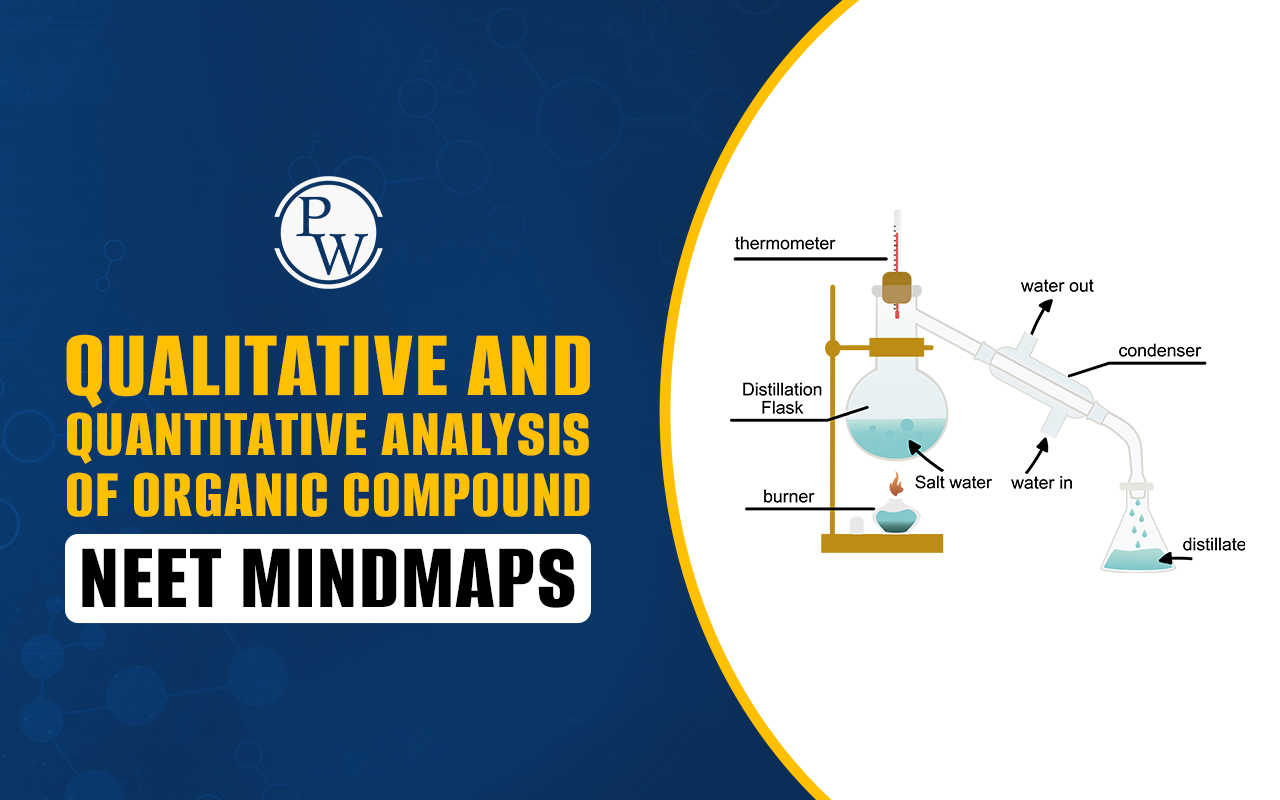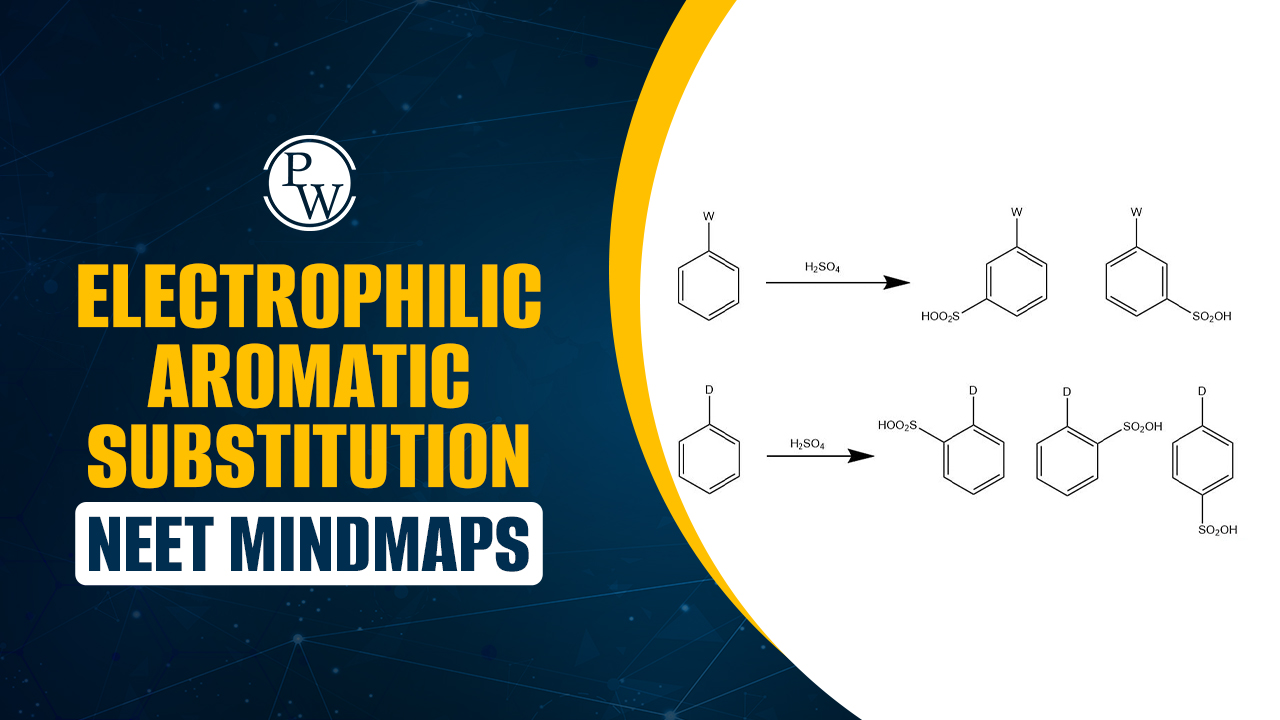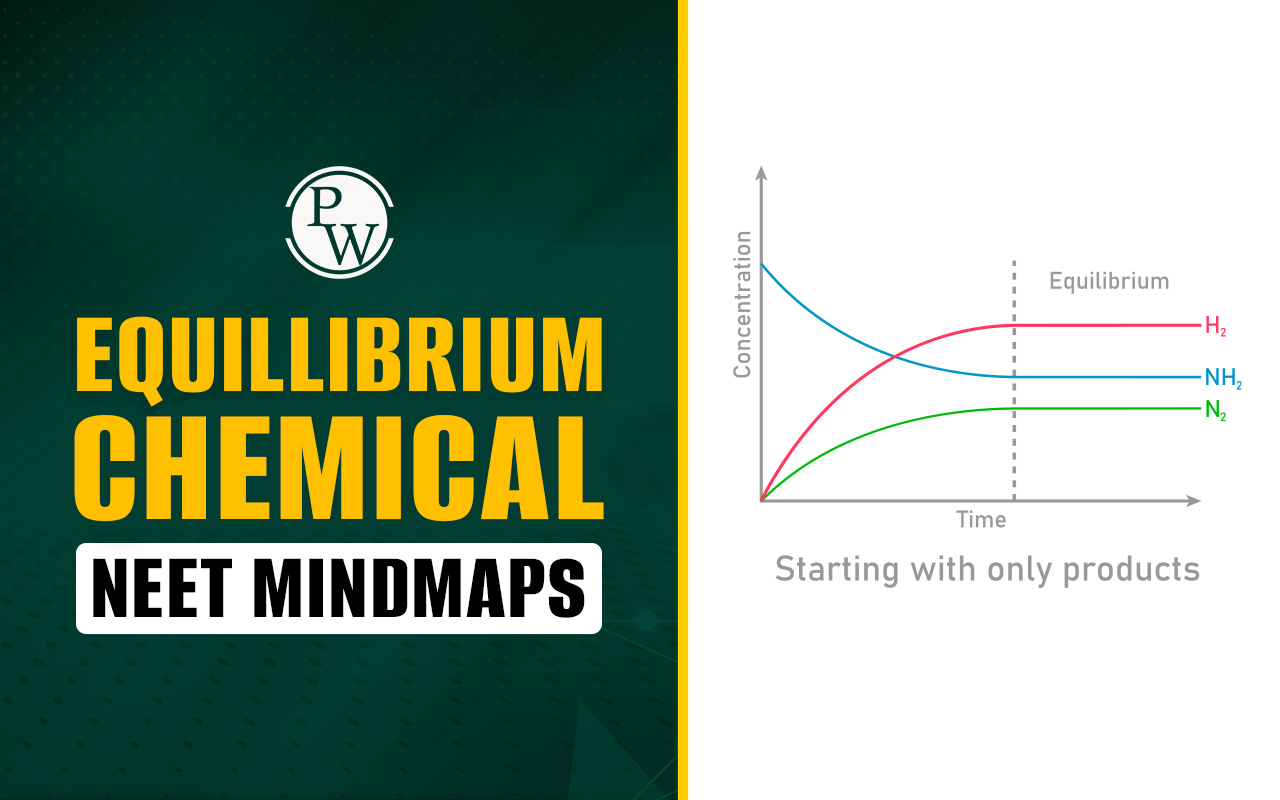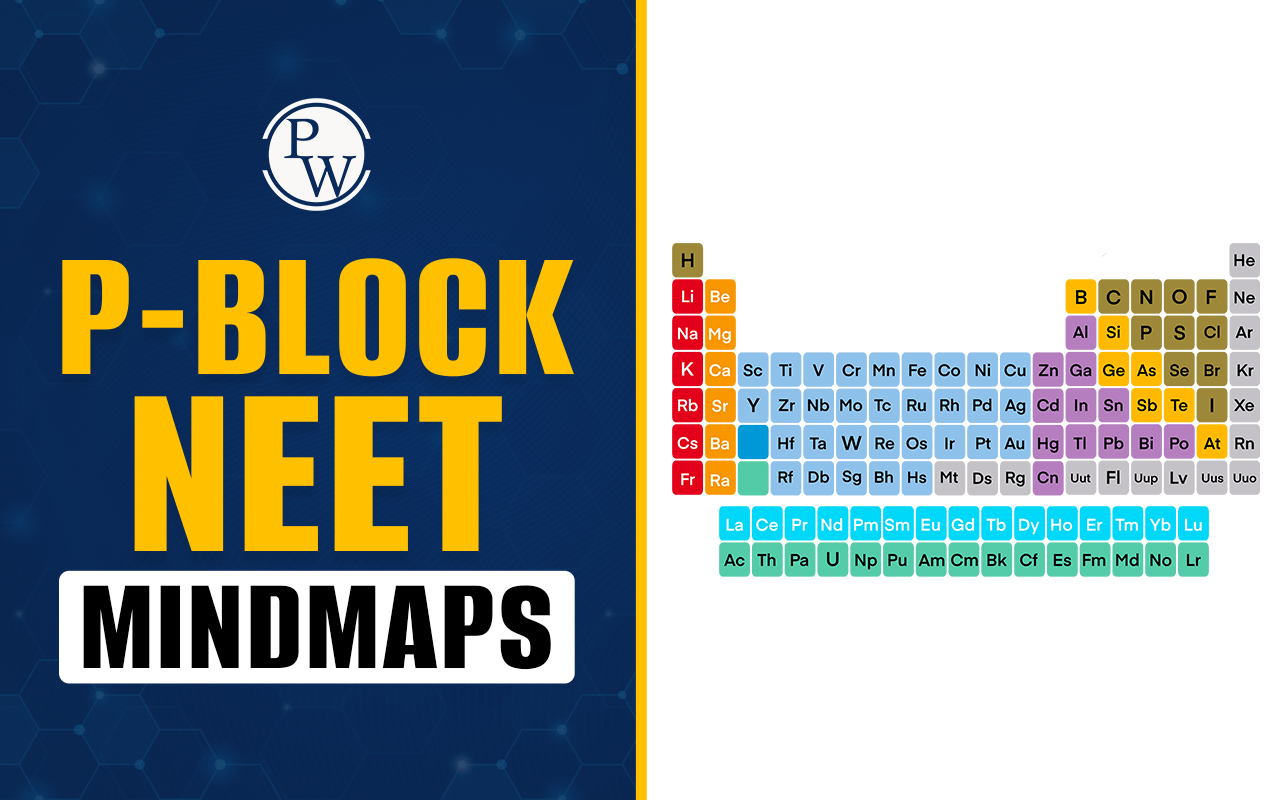
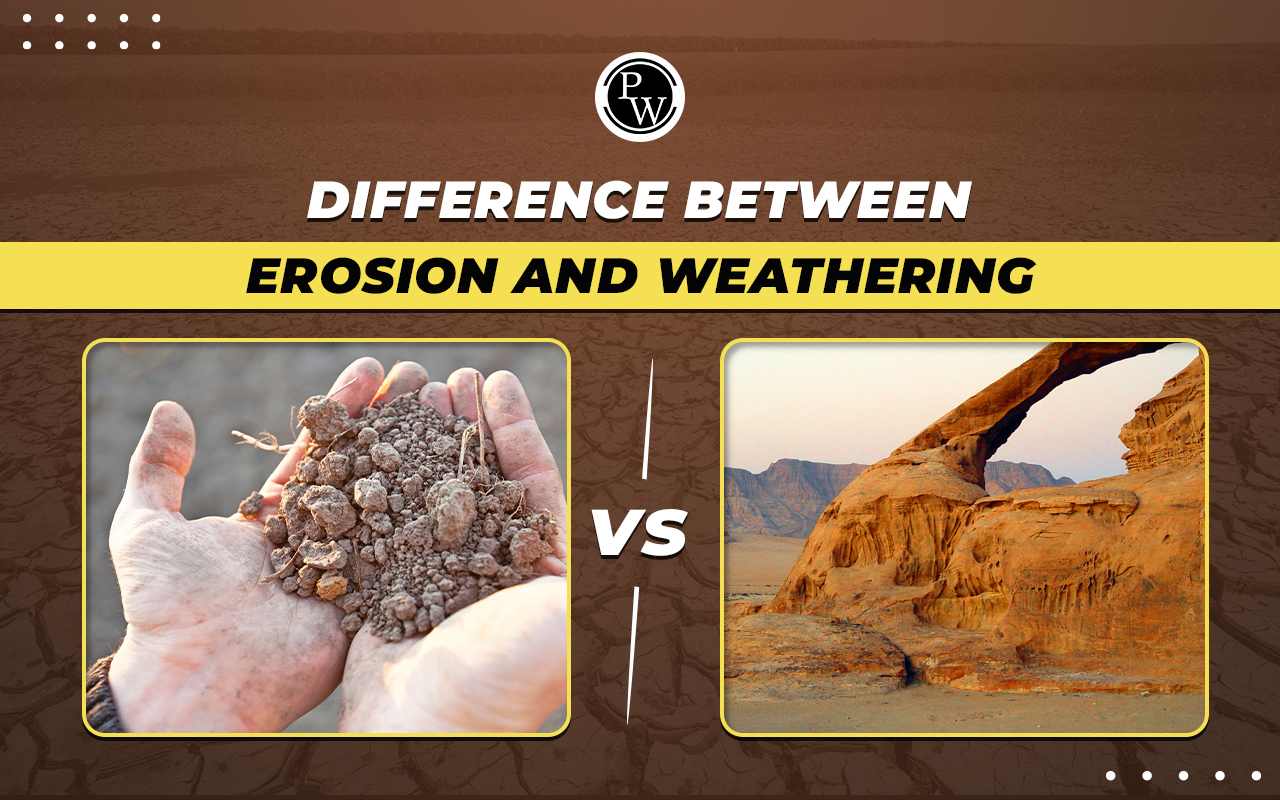
Difference Between Erosion and Weathering: Erosion and weathering are distinct processes that affect the Earth's surface differently, despite their interconnectedness. Weathering is the process of rocks breaking down into smaller particles due to natural forces such as water, wind, and temperature changes. Conversely, erosion is the transport of weathered particles by agents such as water, wind, or ice.
Weathering primarily concerns the breakdown of rocks, whereas erosion is concerned with removing and transporting the resulting particles. The following article will discuss the differences between erosion and weathering.| NEET Biology Syllabus | NEET Biology Diagrams |
| NEET Biology MCQ | NEET Biology Chapter wise Weightage |
| NEET Biology Notes | NEET Previous Year Question papers |
Difference Between Erosion and Weathering Overview
Weathering and erosion represent processes through which rocks undergo separation and displacement from their original positions. Weathering degrades a rock without displacing it, which is what distinguishes them. At the same time, erosion involves the separation of rocks and soil from their original locations. Weathering frequently acts as a precursor to erosion by breaking rocks into smaller fragments that erosive forces can transport away. The primary difference between erosion and weathering lies in their actions—weathering prepares the rock for change, whereas erosion involves actual movement to a new location. Wind, water, ice, temperature, and natural activity are common causative factors in both processes. Furthermore, they can occur simultaneously. This article will detail the difference between erosion and weathering.
Difference Between Erosion and Weathering
While erosion and weathering are related geological phenomena, their mechanisms and effects differ. Weathering is the fragmentation of rocks into smaller particles, whereas erosion transports these weathered materials to a new location. Weathering breaks down rocks before erosion, and erosion transports the weathered material to new areas, helping to shape the Earth's surface over time. The table below explains the difference between erosion and weathering.
|
Difference Between Erosion and Weathering |
||
|---|---|---|
| Aspects | Erosion | Weathering |
| Definition | Erosion encompasses removing and transporting weathered material from one location to another. | Weathering pertains to the breakdown of rocks and minerals in situ. |
| Process Type | Erosion is driven by natural agents such as water, wind, ice, and gravity. | Weathering involves physical and chemical processes contributing to the breakdown of rocks. |
| Location | Erosion involves the displacement of weathered material from its original position. | Weathering takes place at the location where the rocks are situated. |
| Effect | Erosion shapes landscapes by moving weathered material and forming distinctive landforms. | Weathering prepares rocks for erosion by breaking them down. |
| Agent | Agents of erosion include rivers, streams, glaciers, wind, and gravity. | Weathering agents encompass water, wind, temperature changes, and biological activity. |
| Movement Type | Erosion involves the transport and deposition of material. | Weathering does not involve the movement of material. |
| Time Scale | While erosion can occur rapidly under certain conditions, it generally requires time. | Weathering is a gradual, long-term process. |
| Surface Impact | Erosion alters the landscape, wearing down surfaces and reshaping the terrain. | Weathering affects the surface of rocks, causing changes in appearance and composition. |
| Landforms | Erosion gives rise to landforms such as valleys, canyons, and beaches. | Weathering contributes to the formation of soil and sediment. |
| End Result | Erosion results in the transport of weathered material to different destinations. | Weathering leads to the disintegration and decomposition of rocks into smaller particles. |
Erosion
Erosion is a geological phenomenon that occurs when rock particles fragment and break down into finer components. These particles are then exposed to natural forces such as wind or water, which cause them to be removed and transported. Liquid water, wind, and ice are commonly involved in erosion.
Categories of Erosion
Erosion is typically classified according to the force that causes the displacement of rocks, stones, or soil.
Water Erosion: Water is the most widely recognized force driving erosion. Bodies of water gradually wear down and transport rocks and soil along their banks, facilitating the movement of these particles. Erosion also occurs in marine environments, where the dynamic forces of moving water and waves break down and carry away shoreline rock particles.
Wind Erosion: Wind erosion can act on tiny particles such as dust, rock, and ash. It can often relocate substantial quantities of these particles, forming remarkable features like dunes.
Ice Erosion: Ice erosion is infrequent in numerous regions, but it can displace larger rocks than other erosion forces. Ice can transport massive rocks over considerable distances, often miles away from their original locations.
Weathering
Weathering is the process of solid rocks gradually breaking down into smaller particles over time. It occurs due to the combined effects of climate, organisms, and plants on land surfaces. Weathering encompasses biological, chemical, and physical alterations of rocks, leading to their eventual disintegration and transportation. It plays a crucial role in soil formation and manifests in three primary forms: physical, chemical, and mechanical weathering.
Physical weathering: Physical weathering involves separating a rock's structure; freezing water in rock crevices, salt expansion, and tree root growth exemplify this. Wind and water friction contributes to rock surface smoothing.
Chemical weathering: Chemical weathering induces chemical structure alterations in rocks, rendering them more brittle. For instance, iron reacts with oxygen to form easily decomposable rust, while water acids extract calcium from limestone and marble. Chemical weathering precedes physical weathering, enhancing rock vulnerability to environmental forces.
Mechanical weathering: Mechanical weathering involves the fragmentation of rocks due to external forces, such as temperature fluctuations causing contraction and expansion. Plant roots further this process by growing through rock cracks. Chemical and mechanical weathering synergistically operate to disintegrate rocks.
Difference Between Erosion and Weathering FAQs
What is weathering and erosion?
What do erosion and weathering show?
What are the three types of weathering?
Can you give a real-life example of erosion?
What sets weathering apart from erosion, and which happens first?






